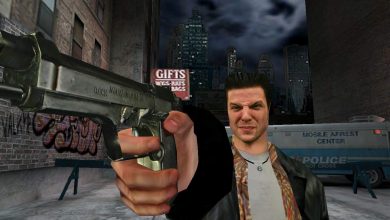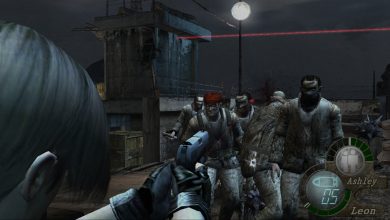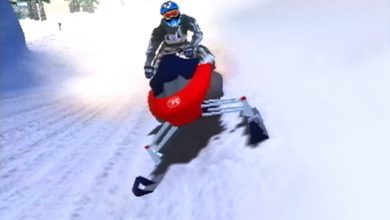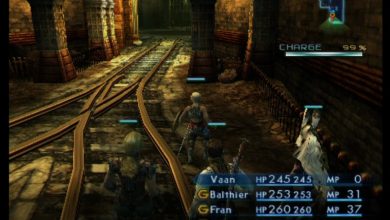Dark Cloud 2 Review
Good enough to eat
The First Dark Cloud was the Emperor’s New Clothes of video games. It was a train wreck of a game, and yet no reviewer was willing to finger it as such. The PS2 had very little A++ software at the time, and even fewer RPGs in general, and Level 5’s “Zelda killer” was really the messiah that didn’t deliver (look at that sentence. I should be a rapper). It had some interesting ideas, but it was more frustrating than fun in the end. So for the sequel, Level 5 went back to the drawing board, and fixed some of the things that were wrong with the game, and added a whole lot more. The result is quite nice.
Content Index
Story
The hero of the game, Maximillian, is quite an oddity. On one hand he lives in the biggest mansion in Palm Brinks, and yet he wears dirty jeans and chooses to work in a garage. Why? Parenting issues. His mother left under “mysterious circumstances” when he was about five and his father won’t talk about her disappearance. Max is more lonely than angry though, and the entire game is set up as a letter that Max is writing to his mother. The overall effect is fairly sweet. Max is kind of lost, and just drifts through his life, with nothing exciting ever happening. But one day he gets tickets to Flotsam’s traveling circus, and while he is there, he overhears something that he shouldn’t, and BAM! The chase is on! Flotsam and his crew of evil clowns seem to think that Max holds something of great value, and they will stop at nothing to retrieve it. After narrowly escaping capture, Max quickly runs into Monica, a spunky young lass who claims to be from the future. She says that in her time an evil Emperor Griffon has been tearing the past into pieces, and that she has come to Max’s time in order to recruit him in her quest to fix things. Max agrees to help Monica rebuild this ravaged world, and in the process hopefully find his long-lost mother. Yes, yes, let’s go on a marvelous quest to save the world. The story isn’t particularly deep, but it gets the job done. There are more events than the similarly missing person story in Kingdom Hearts, but it’s much less involving than the average Final Fantasy game. There are certainly no particularly interesting and/or deep themes present, but it’s a competent enough tale, all told.
Gameplay
A dungeon hack with style. Randomly generated floors, monsters, treasure, the whole cow. But Dark Cloud 2 has an some interesting twists here and there. For one, you don’t level up your character at all, only their weapons. Except for the attack stat, weapons don’t grow stronger as you level them, and instead you earn synth points that you can spend manually. You can turn almost any item in the game into a “synth sphere,” and then use it on the weapon. For example if you wanted to upgrade a weapon’s exorcism stat (how effective it is versus ghosts and spirits), you would “spectralize” a holy stone, and then spend one of the synth points that you earned leveling up to combine it with the weapon and raise the exorcism rating. Certain items will raise a stat differently (you can check before you turn it into a synth sphere), and you only earn so many sytnh points between levels, so it’s a good idea to put some thought into your actions beforehand. The requirements for leveling each weapon into a new one are also plainly displayed, and you can view these at any time too, and then focus on raising the appropriate stats. Max has a gun and a wrench and Monica wields a sword and a magic armband, so there’s quite a bit of fun to be had. It might sound a little complicated, but there are detailed tutorials for this and everything else right in the main menu. The tutorials are all narrated by characters from the game, which was a nice touch if I do say so myself. At some point in the game you may run across a weapon that is more powerful than the one that you are currently using, and in that case you can even spectralize your current weapon to combine it’s power with the new one. Spectrumalized weapons retain about 60% of their ability, but they can only be spectrumalized at level 5, which prevents you from cheaply powering up a good weapon by synthing weak ones to it. It’s a great system, but it gets a little rough later in the game, because the requirements for upgrading weapons into new ones skyrocket. It’s almost impossible to use individual items, so you have to level up a weak weapon to level 5, and then build up the necessary stats as much as possible, and then spectralize it into the current weapon. You could spend five synth points to raise a stat 15 points with items, or 50ish with a weapon. And I’ve had to synth 3 weaker weapons into a strong one in order to get it to evolve too, and it’s quite a drag. It’s not a game-breaker or anything (a lot of gamers might not get that far in their weapon evolution), but it’s annoying none the less.

Level 5 has improved upon the first game in several areas as well. The thirst gauge has thankfully been removed entirely, and now it’s just simple status effect. You no longer have one main character and a dozen worthless allies, but rather two solid main ones, and an ally character that functions a lot like the non-combatants from Suikoden 3. They can give you various bonuses in battle, but they don’t actually fight with you. Both of the main characters have an alternate form too. Max can summon his powerful Ridepod battle armor (Steve) and Monica can transform into a number of monster creatures. I liked the Ridepod a lot, since it was really useful, and totally customizable. You find and invent all kinds of different weapons, casings, and wheels, and you can equip any of them on the fly. Monica’s monsters were far less useful though, since they all start at level one, and you have to level them up manually to strengthen them. I had my hands full leveling up 4 weapons and a Ridepod, and really didn’t care to waste that experience on any of Monica’s dozen crappy rat forms. I never once found a need to transform after the initial tutorial on the subject. Level 5 did not, however, remove the durability aspect, which irked me to no end. As you fight with weapons their hit points go down, and they eventually break and become unusable. You must use an appropriate type of repair powder before their hp reaches zero, or they will loose some exp. The system is much more forgiving than it used to be (In Dark Cloud 1, broken weapons simply…….broke. they became worthless forever), but I still don’t see the need for it. It is not an effective means of limiting how much fighting you do, and it only serves to make the beginning of the game more frustrating, since you don’t have the funds to stock up on powder. It made me want to stock up on a different kind of powder if you know what I’m saying………….CRACK!
The unique Georama aspect of the last game returns, but in my opinion, it’s a little less fun here. Technically, the game is broken up into two sections: gameplay and Georama. As was the case in Dark Cloud 1, the world in Dark Cloud 2 is in shambles, and you have to rebuild it. Manually. As in you have to replant every tree, build every house, and repopulate the entire world. Each of the 7 or so dungeons has an accompanying Georama field, and you cannot complete the dungeon unless you fix each town. In the last game, your hometown was destroyed, and as you found the pieces, you had to talk to each villager and find out where they wanted to live, and how the town should be set up. But in part 2 you are simply given a list of objectives that become more and more defined as you progress through the dungeon. The original Georama was almost puzzle-like, as you had to interview townsfolk, and make changes as you progressed. But this new Georama is just a chore, with little to no room available for creativity and/or thought.
Graphics
Yes they used cell shading, and yes the technique is growing old, but consider this; Dark Cloud 2 would look perfectly fine without it. Unlike some cell shaded games like Jet Grind Radio and Megaman Network Transmission, the cell shading isn’t used to hide low-count polygonal models, but rather to enhance them. The textures are crisp, and the models are detailed as well. Some of the facial texture animation is even more impressive than the stuff found in Breath of Fire 5 too. The game is not completely cell shaded either, since a lot of monsters and robots simply wouldn’t have benefited from the effect, and thusly it was not used. It’s really only meant to make the living things in the game stand out. And the graphics do stand out too, since the art style has such a unique, European feel to it (Max looks a lot like a French impressionist painter, oui?).

This is the first game that I have ever deemed “good enough to eat” too. That’s an expression you don’t hear enough anymore. I’m trying to bring back a renaissance of things that look “good enough to eat.” The first time I saw the firbit dwarf people, I thought to my self, “Those things look good enough to eat………I want to eat one of them.” The effects are pretty at the least and quite good at best. The animation didn’t really wow me, but it was adequate enough.
Sound
Overall, the voice acting was pretty good, featuring lots of actual voice actors such as Cam Clarke (MGS, TMNT), Mark Hammel (Batman, Time Squad, Star Wars), and just about the entire cast of Nickelodeon’s Rugrats. I think the key was that the directors tried to keep it pretty serious. No matter how silly a character looks, they all have a normal voice. No goofy Saturday morning theatrics, and no frivolous accents either. There were, however, two characters that I did not care for at all: Max and Monica, the two main protagonists. Christ on a stick. I don’t know who voiced Monica, but I’d like to smack her with a paddle that has the word “subtle” written on the side. Does she have to be so eager about everything?! Such overacting I thought I’d never see. And in regards to Max, it wasn’t that his performance was poor, rather I simply didn’t care for the actor. He is an inventor, and thusly kind of a nerd I guess, but this guy was just too nerdy. You just want to punch him in the face; he’s that much of a nerd. If I ran across him on the street, asking for the time, I would immediately punch him in the face when he opened his mouth. Dark Cloud 2 be damned, hearing that voice would drive me to fisticuffs. The performance was fine, and the actor even thought to add some small nuances to the character, such as the fact that Max’s voice cracks every time he says “mother.” But it doesn’t matter if it’s painful to listen to. I said that the voices weren’t overly comical, yes, but this is the one exception. It’s too bad that the largest roles were helmed by stinkers, but in terms of pure numbers, 90% of the actors were talented.
The soundtrack wasn’t spectacular, but it was still pretty interesting. The composer(s) choose a simple theme and stuck to it. Except for a boss who attacks with an electric guitar, all of the music in Dark Cloud 2 was composed with traditional instruments. Lots of strings, and lots of wind, and a little piano here and there. It gives the game an interesting, somewhat lazy “ye olde” feel and works quite well. It evokes images of boys in overalls and no shoes and the sipping of lemonade and tea. Except for the Metal Workshop theme (which was awesome) and the ending vocal theme (which was terrible), I didn’t find much of it to be too memorable, but it was mostly well done either way.
Replay Value
There is way too much to do in Dark Cloud 2. I spent over 50 hours on the game and probably didn’t even scratch the surface of it. Firstly let’s talk about the minigames. Fishing is an ever present RPG staple, and the fishing in Dark Cloud 2 does not disappoint. There are plenty of spots, and lots of bait, and you even have the ability to level up your rod. Fish can be sold, entered in a weigh-in contest, or best of all bred. Max gets an aquarium about halfway through the game, and fish breeding is at least as deep as any chocobo sim. You can feed them bait, mate them, train them in the fight tank, and eventually enter them in races. Races are held every ten (in game) days and offer a host of fabulous prizes.
Dark Cloud 2 also contains a type of golf called Spheda. The hijinks of Emperor Griffon have caused several tares in the space time continuum and you have to repair them by knocking the torn pieces back into place. But the catch is that Max cannot touch them with his bare hands, so he has to hit them in with a golf club. It works a lot like regular, three click, Hot Shots, video game golf with one twist. The ball and the goal are both colored, and the ball can only enter a goal of the opposite color. The ball changes color every time it bounces, so there’s a light element of pool involved too. I liked Spheda a lot, but it was damn hard. Since the dungeons are randomly generated, the par is calculated solely based on the distance between the ball and the goal, and curves and holes often aren’t taken into account.

There is also a robust invention system to work with too. Max can take pictures of various items, and then combine three of them into a new invention. For example if Max takes a picture of, and thinks about a milk can, a stream, and a stove, he can invent a steam powered water cannon for the Ridepod. I didn’t like the invention system at first – it seemed random and stupid – but it grew on me after a while. You’ll find plenty of recipes lying around, and if you get two out of three materials right, the game will usually give you a hint for part three. And in regards to photography, you can also go on a quests for “scoops” (which are rare one time only photo opportunities) and earn rewards for them.
And the best part about all these mini-games? You can play them anywhere. Golfing and fishing both take place in dungeon floors that have been completed, and Max carries his aquarium and camera around with him at all times. I think the developers realized that dungeon crawling can get mighty tedious, and they gave players an opportunity to take a break as often as possible. You can only feed fish once every three minutes, so you could conceivably gain a few levels in a dungeon floor, and check in on your fish every few enemies. It’s all very well conceived and works marvelously.
There’s a ton to do in the main game itself too, mini-games be damned. Characters don’t have levels per se, but you could spend quite a bit of time leveling up weapons, and synthesizing them into and out of each other. New weapons level up quickly, and most will be at level 5 within a few floors of fighting, so you are encouraged to start new evolution tracts often. It’s almost more satisfying than simply leveling your character up and watching his/her stats grow because you actively see the fruits of your labor all the time. Weapons change and shoot out different things constantly. And you’ll need to do quite a bit of weapon tweaking too if you want to beat the bonus chapter and see the true ending to the game. After you’ve beaten the final boss and watched the credits, you have the option of entering this bonus dungeon and fighting some old friends. The dungeon is pretty tough, and I can see why it wasn’t part of the main game, but it is available for thrill seekers. Each dungeon floor in the game also houses a serious of extra challenges to complete too. They range from winning at Spheda to defeating every enemy with only the sword or only the gun. There are hundreds of these to take on and you can buy several new costumes with the medals you win.
In Closing
Never in all my years have I seen such an improvement in a sequel. They took all of the good things from the first game and took out almost all of the bad things. I wish that they had left the Georama element alone, but that’s a minor complaint, as Dark Cloud 2 is definitely one of the PS2’s premier RPGs.




